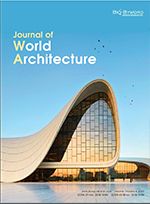Abstract
Heritage Impact Assessments (HIAs) are progressively needed to investigate potential impacts and outcomes of development on the Outstanding Universal Value (OUV) of world heritage properties. However, many key stakeholders involved in implementing the World Heritage Convention lack the management system, methodological tools, and guidelines to conduct effective impact assessments in areas without these resources. The paper explores the successful utilization of the Heritage Impact Assessment (HIA) tool to address concerns raised by UNESCO and civil society. This occurred when the Punjab government initiated the Orange Line Metro Train Project (OLMT) near the World Heritage Shalimar Garden and other historic monuments in Lahore. The project aimed to meet the daily transportation needs of around 2.5 million commuters.
References
Haseeb B, 2017, SC Sets Aside LHC Decision Against Orange Line Train, Dawn News, December 8, 2017, viewed November 20, 2023, https://www.dawn.com/news/1375327
Malik H, 2017, SC Reserves Verdict in Orange Line Metro Project case: Civil Society Contends Project Will Damage Heritage Sites, The Express Tribune, April 17, 2017.
UNESCO, 2017, Decisions Adopted During the 41st Session of the World Heritage Committee, November 20, 2023, https://whc.unesco.org/archive/2017/whc17-41com-18-en.pdf
Hasnain K, 2016, Emotions run high against Orange Line Train, Dawn News, January 16, 2016, viewed November 20, 2023, https://www.dawn.com/news/1233341
Hawkes J, 2001, The Fourth Pillar of Sustainability: Culture’s Essential Role in Public Planning, Cultural Development Network, Victoria.
Sagnia BK, 2004, Framework for Cultural Impact Assessment, International Network for Cultural Diversity (INCD), viewed November 20, 2023, https://cnxus.org/wp-content/uploads/2022/04/FRAMEWORK20FOR20CULTURAL20IMPACT20ASSESSMENT20INCD_2004.pdf
Bhutta E, Hameed M, Rehman CA, 2018, Shalamar Garden: Reappraisal of Taken Measures in the Wake of Orange Line Train and Socio-Economic Implications. Ancient Punjab, 6: 27–44.
